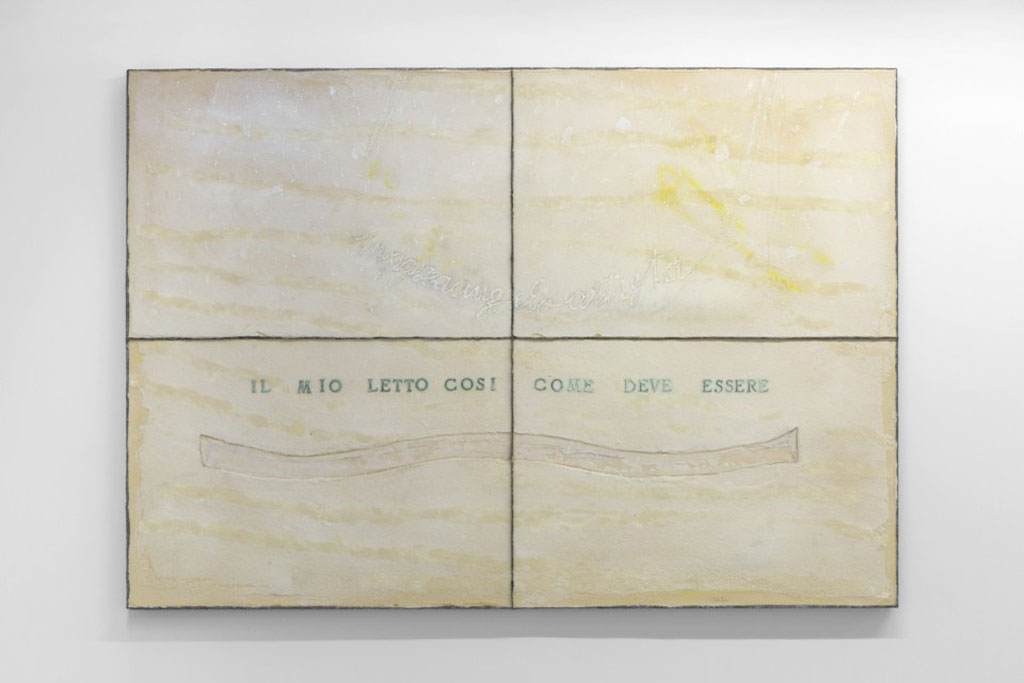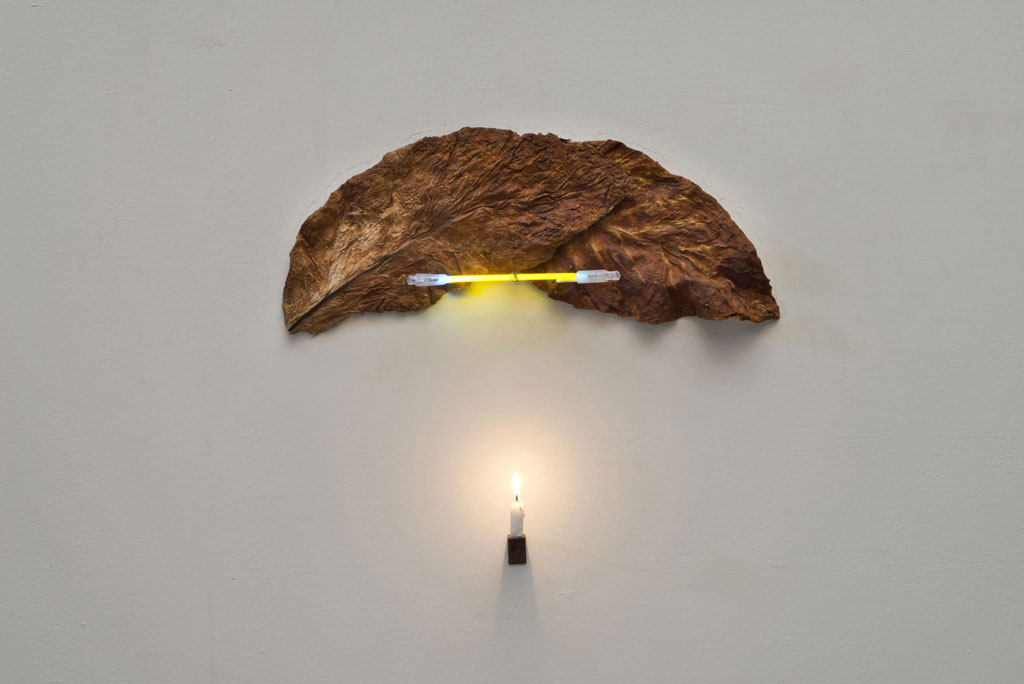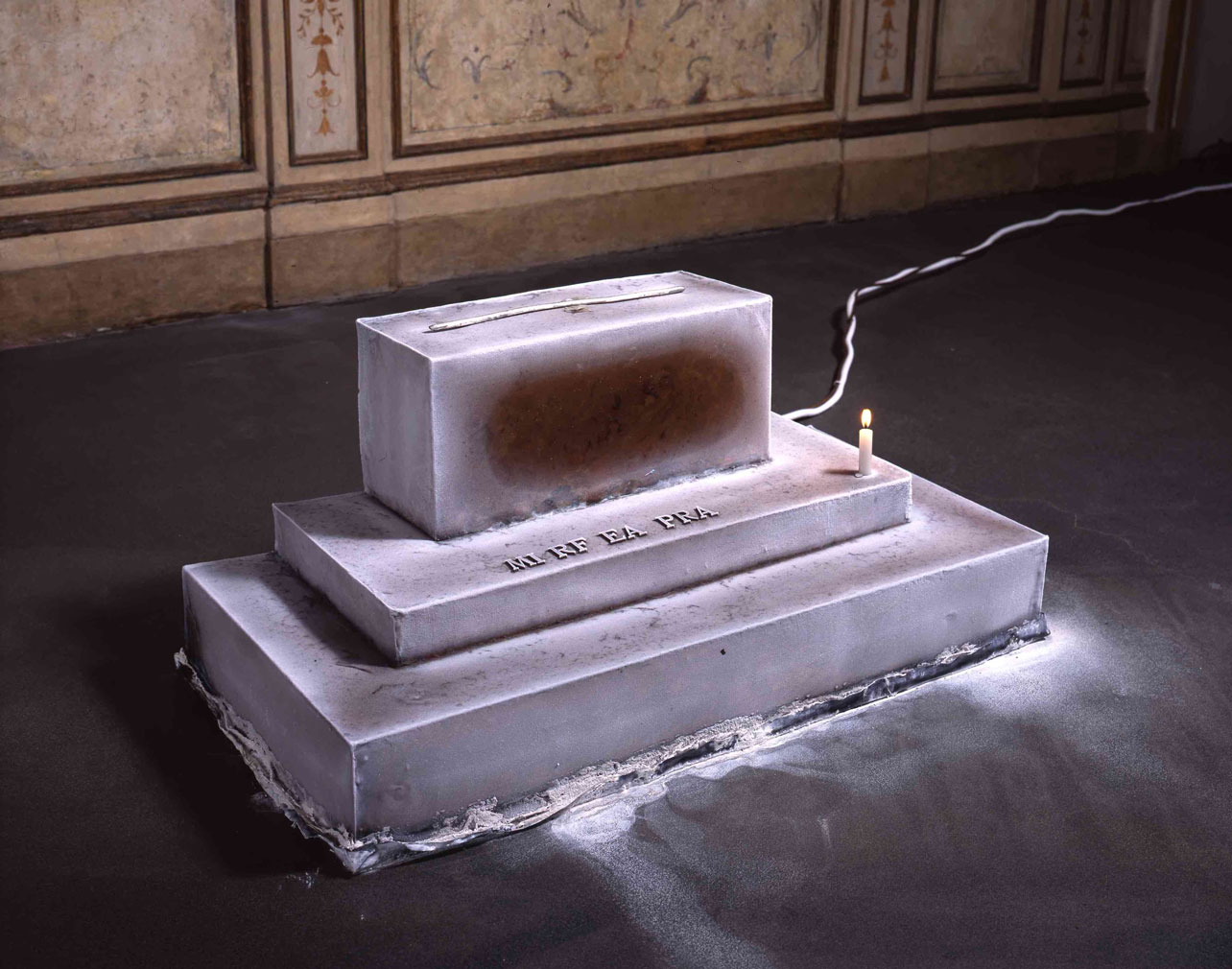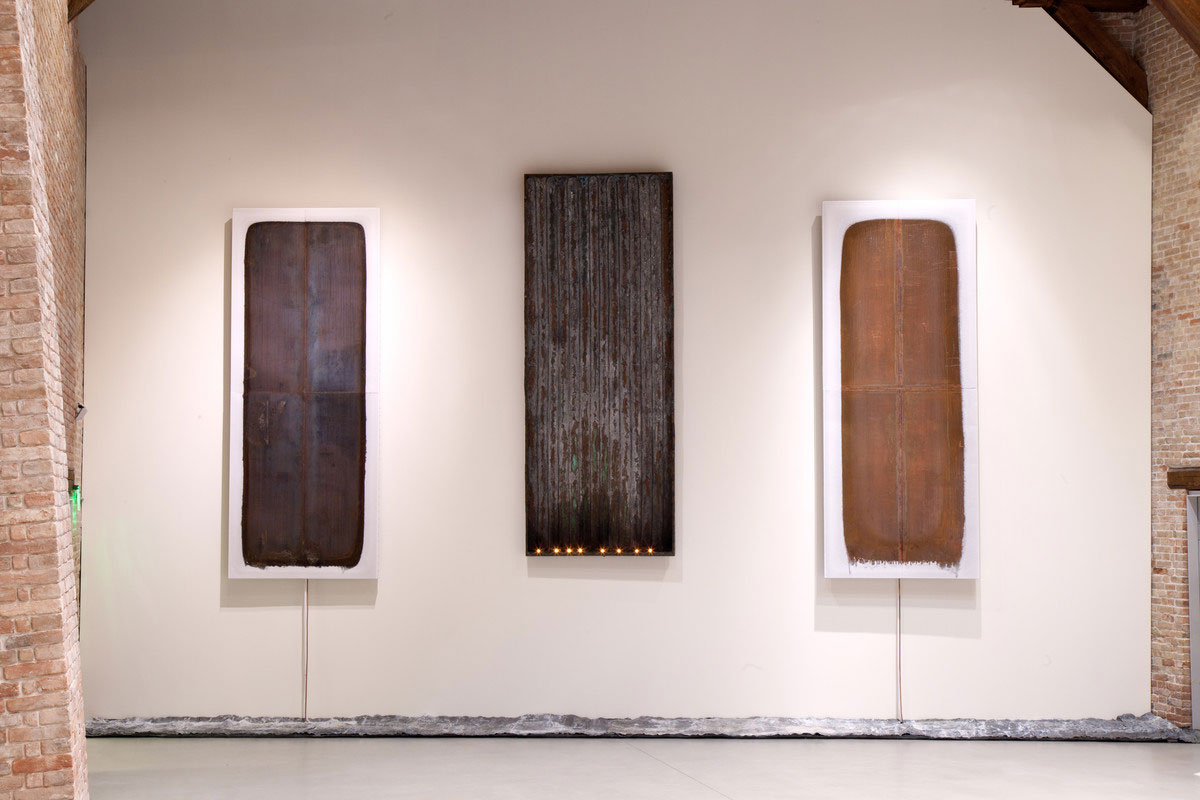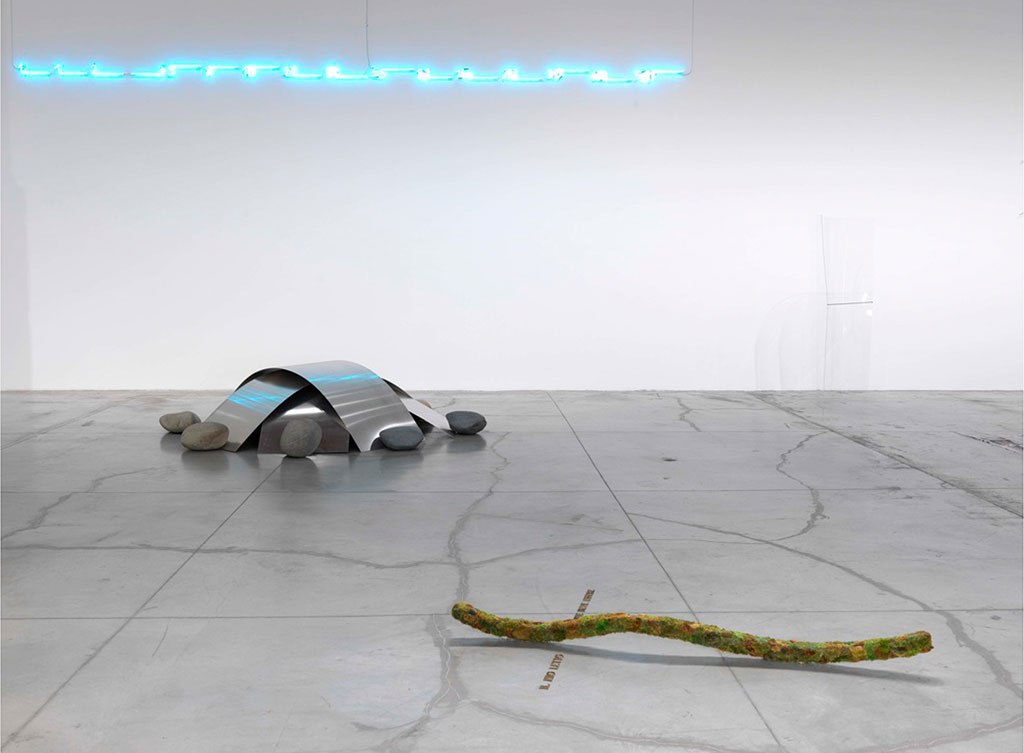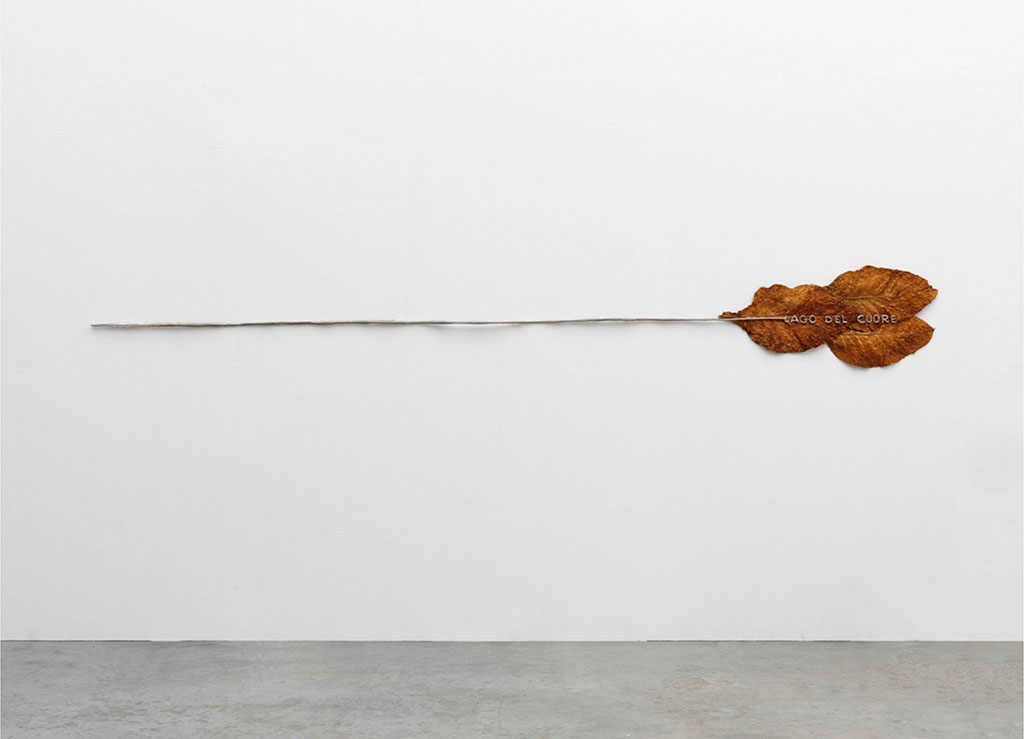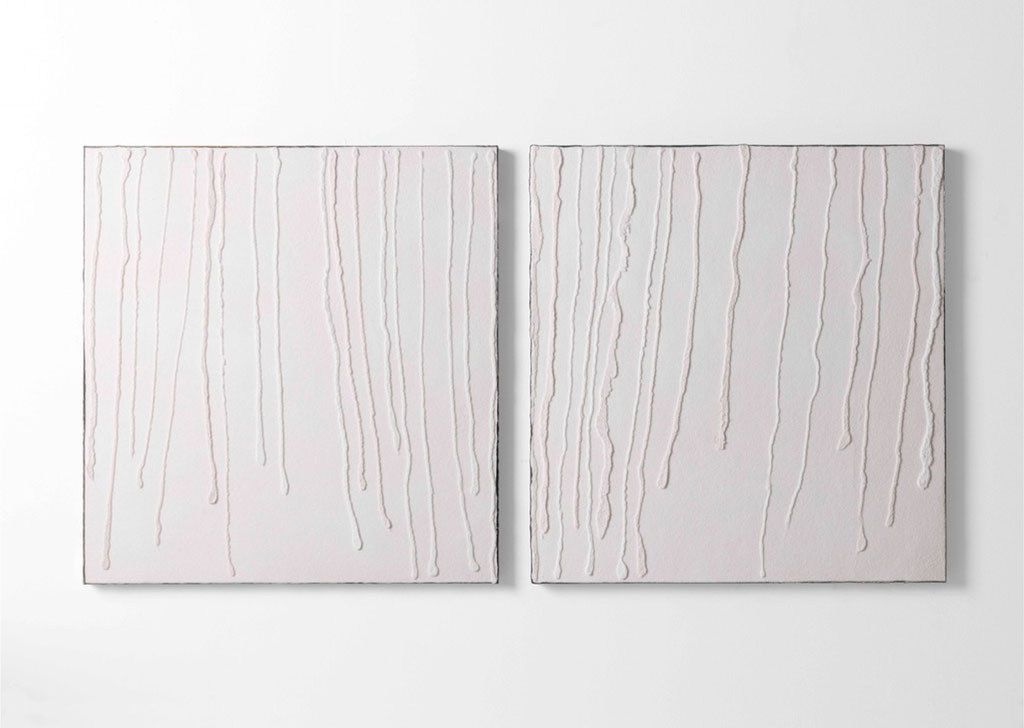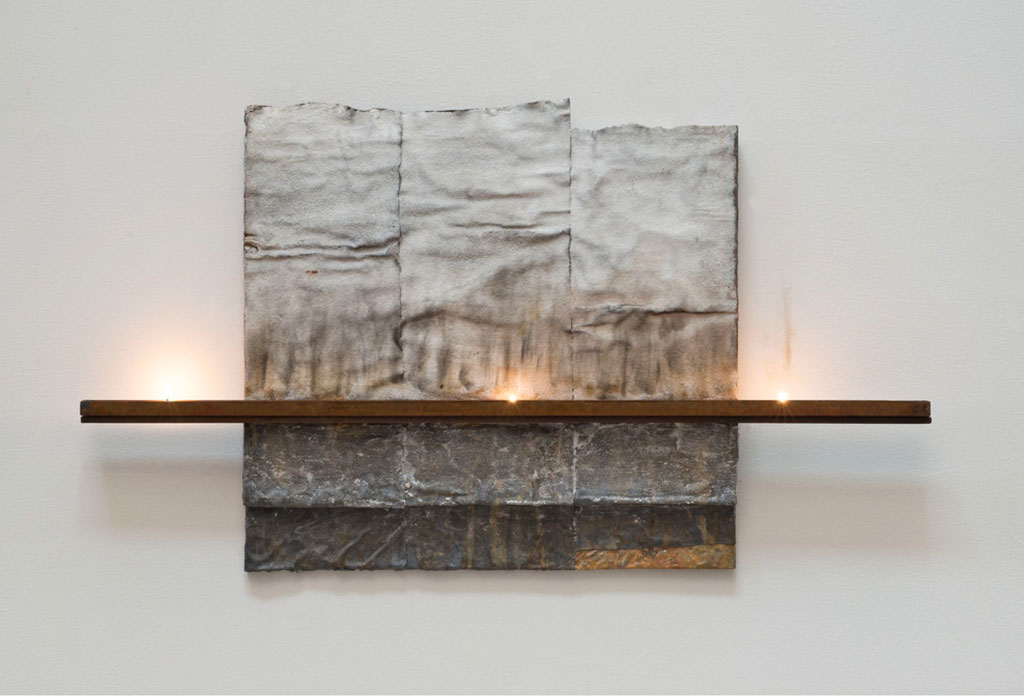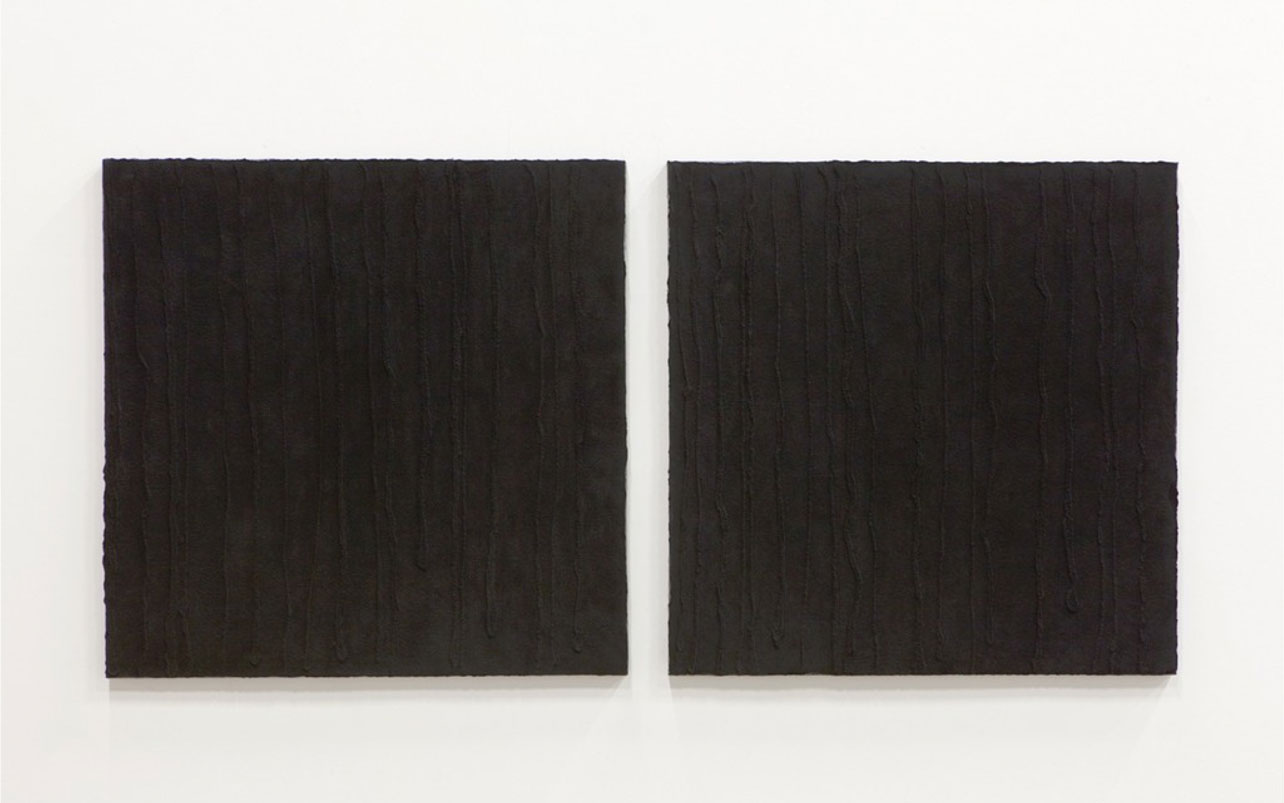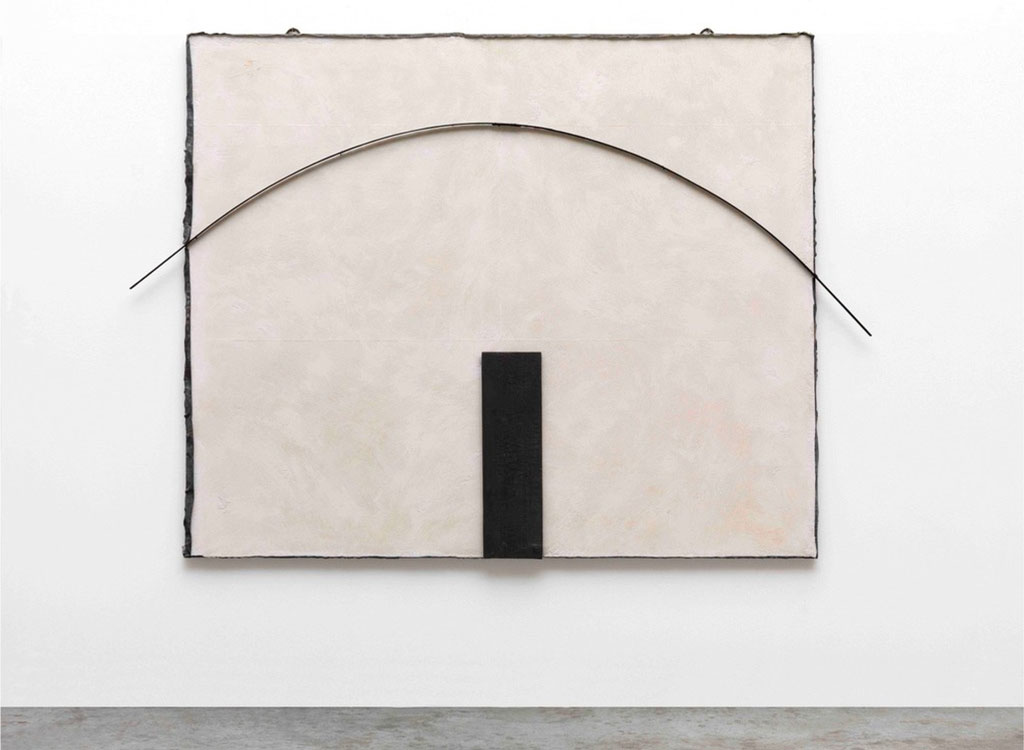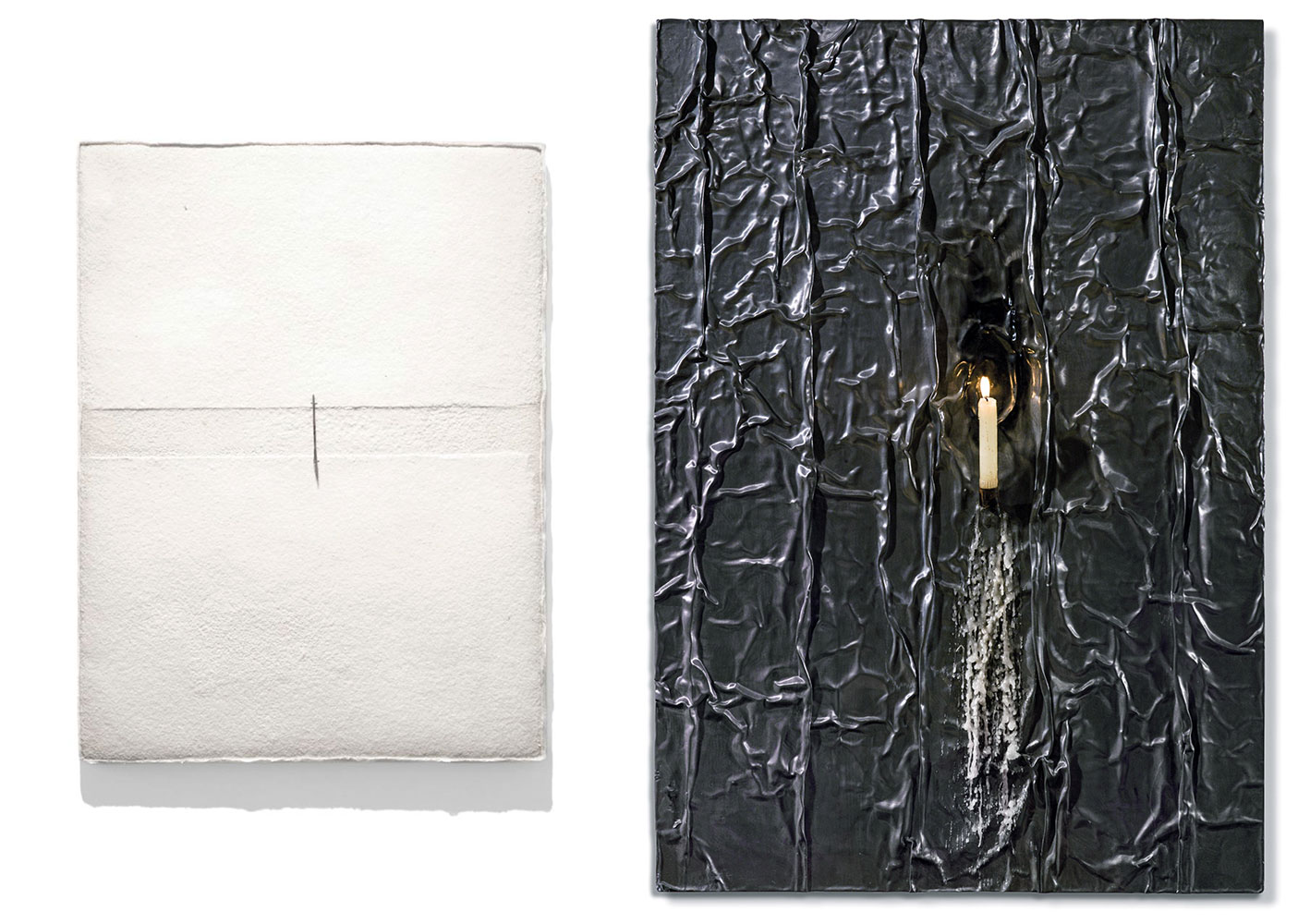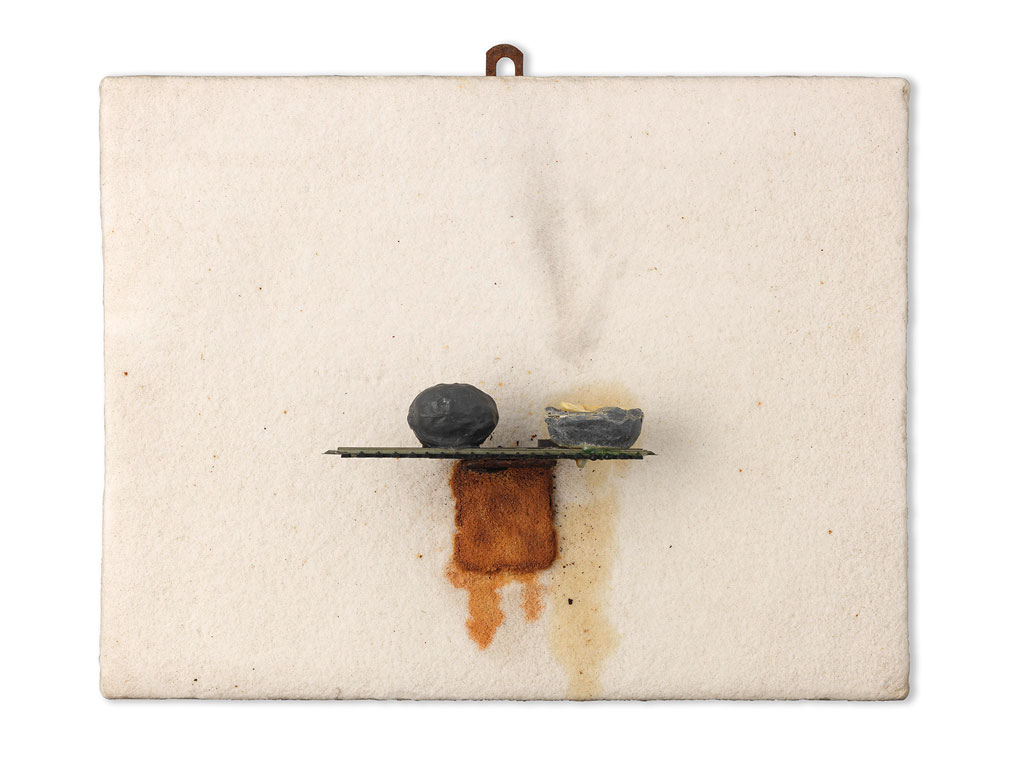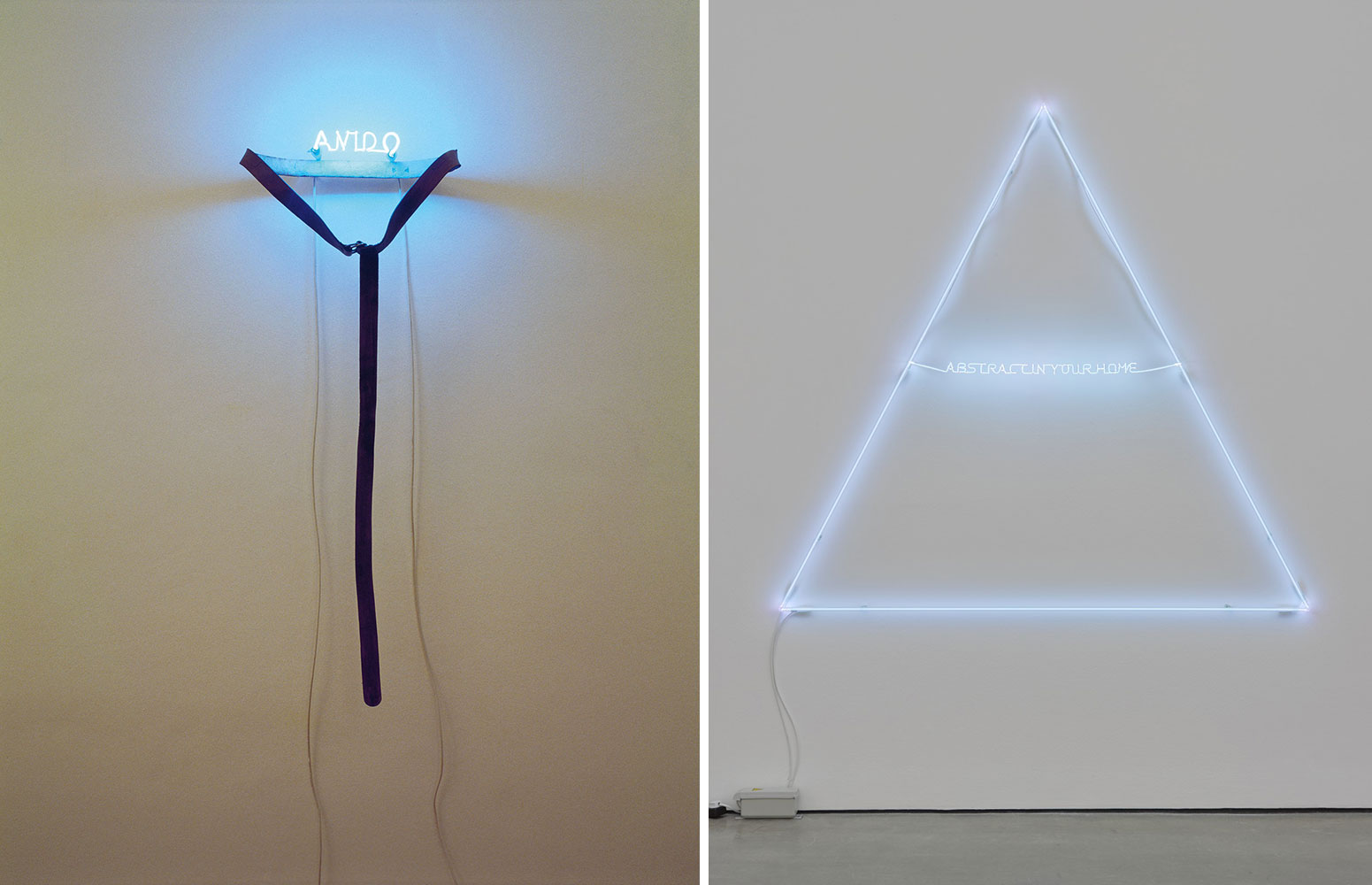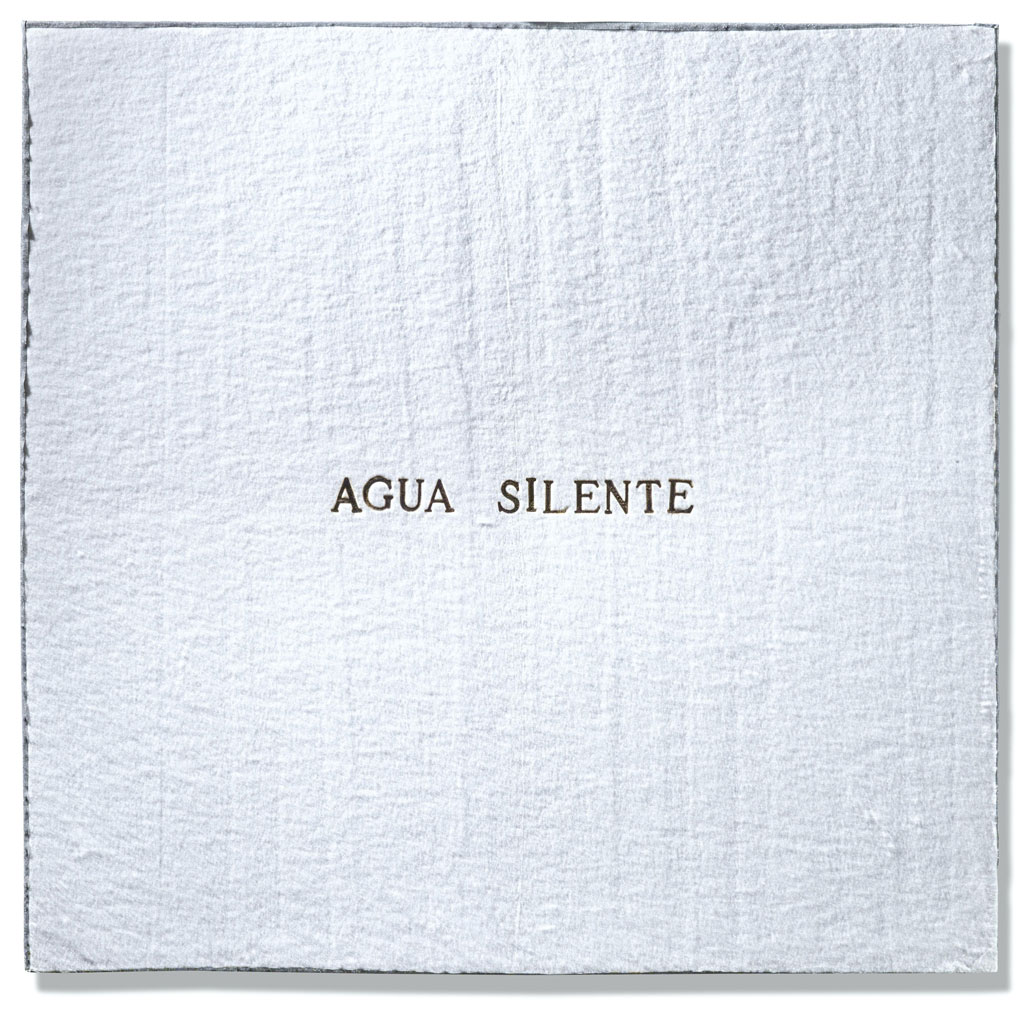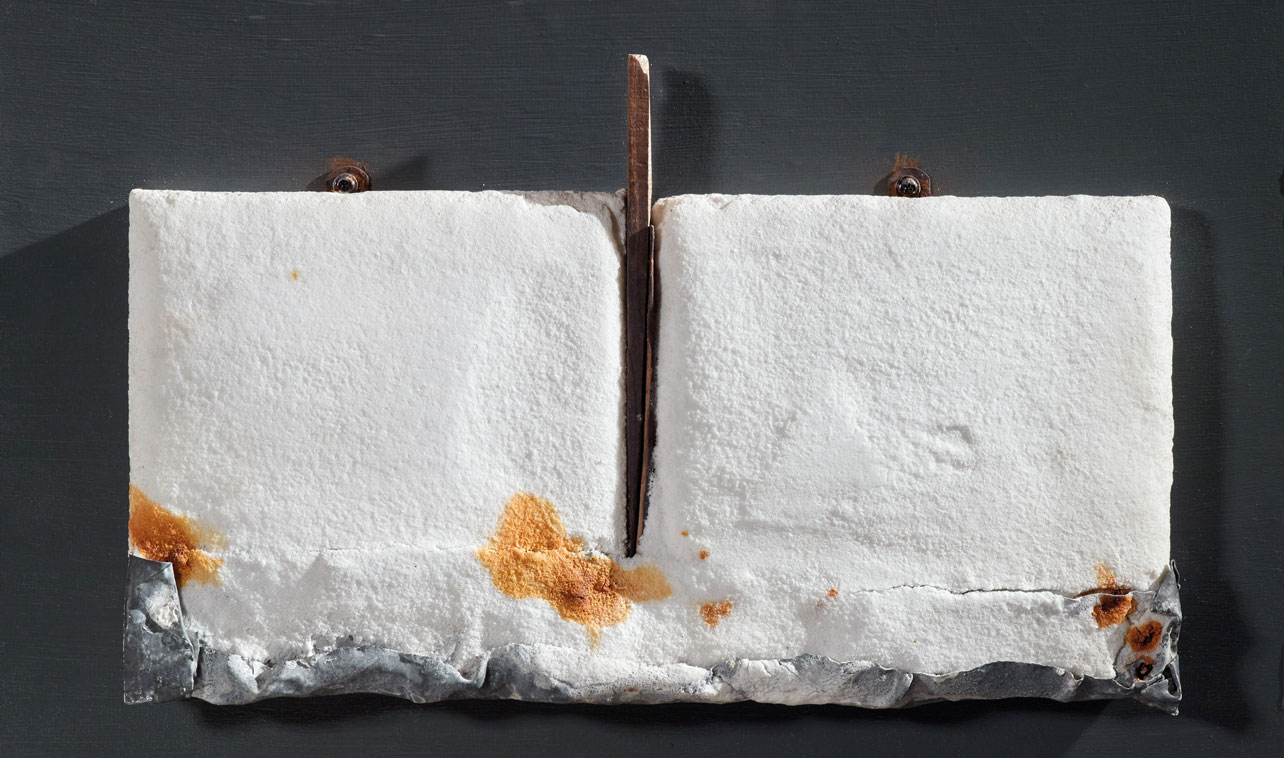TRACES: Pier Paolo Calzolari
 Today is the occasion to bear in mind an emblematic figure in the Italian contemporary art scene and part of the Arte Povera movement, Pier Paolo Calzolaric (21/11/1943- ), an artist has developed an unusual œuvre based on the use of certain recurring materials since the 1960s: tobacco leaves, salt, fire, frost, copper and lead. Calzolari’s practice is an ongoing investigation into material mutations and a certain disposition to experimenting with temporalities. This column is a tribute to artists, living or dead, who have left their mark in Contemporary Art. Through documents or interviews, starting with: moments and memories, we reveal out from the past-unknown sides of big personalities, who left their indelible traces in time and history…
Today is the occasion to bear in mind an emblematic figure in the Italian contemporary art scene and part of the Arte Povera movement, Pier Paolo Calzolaric (21/11/1943- ), an artist has developed an unusual œuvre based on the use of certain recurring materials since the 1960s: tobacco leaves, salt, fire, frost, copper and lead. Calzolari’s practice is an ongoing investigation into material mutations and a certain disposition to experimenting with temporalities. This column is a tribute to artists, living or dead, who have left their mark in Contemporary Art. Through documents or interviews, starting with: moments and memories, we reveal out from the past-unknown sides of big personalities, who left their indelible traces in time and history…
By Efi Michalarou
![]() Born in Bologna in 1943, Calzolari spent his childhood here. In 1965 he returned to Bologna and opened a studio in Palazzo Bentivoglio, where he created his first painting works and hosted exhibitions by other artists, presenting the first 8mm and super8 films by Ari Marcopoulos, Andy Warhol, Jonas Mekas and Mario Schifano and meets characters like Allen Ginsberg, Julian Beck, Luigi Ontani, Raymond Hains and Chet Baker. In 1966-1967 he created the first of his works-performances which involved the spectators in a direct participation in the work and which Calzolari himself defines as an “activation of space”, according to a typical working method of his subsequent production. Between 1967, the year in which he moved to Urbino, and 1972 Calzolari moved between Paris, New York and Berlin and brought his artistic project to maturity, establishing the parameters of his plastic vocabulary. In this period Calzolari merged with Arte Povera and his writing “The ideal house” (1968), which finds its fulfillment in a group of works, is considered by some to be one of the essential statements of this movement. In these years he created an extensive cycle of works with icy and neon structures, such as Horoscope as a project of my life (1968) and the Gesti series (1968-1969) in which the formation of frost on the forms, sanctioned by the passage of time, is index of the process of alchemical transformation of matter. In this way the objects and materials that the artist has been using since 1967 (fire, ice, lead, tin, salt, moss, tobacco) experience a second life alongside the luminous elements, a trace of the luster of Venetian marble. The work “Combustio” (1970) exemplifies these themes, consisting of a mattress pinned flat against the wall with the word ‘combustio’ written across it in red fluorescent letters, the whole ensemble covered in glittering, white frost. Beginning in 1972, the artist focused on the study of painting in a deeply unconventional way. Preferring new “supports”, such as flannel or cardboard sheets glued to the canvas, the artist juxtaposes pictorial signs with real objects, such as small paper boats or trains moving along endlessly repeated paths. Calzolari’s painting is often linked to the physical involvement of people: in Berlin, for example, he creates a series of work-performances such as “Usura amore e misericordia” (1972-1974) in which the artist, subverting every formalism, brings the ritual of everyday life to the level of aesthetic experience and in a horizontal relationship with the world and with history. His path, despite the evident proximity with the contemporary production of the Arte Povera artists (in particular with Mario Merz and Jannis Kounellis), with American Conceptual Art and Post Minimalism is characterized by several peculiar elements: the desire for saturation of the senses, the way of making visible the data of abstract thought and the essence of things, the particular attention given to the fragility of objects and materials. From 1973 he moved between Bologna, Paris and Milan where he settled for eight years continuing the parallel research between painting, sculpture and performance. Finally he moved to Turin and created installations composed of large-format paintings and performances at the Tucci Russo gallery. Around 1982 he left Turin for Vienna, where he returned to concentrate above all on painting and in 1984 he decided for the quality of the light to return to Montefeltro where he still lives and works. During this stay in Urbino, Calzolari is invited to participate in many residences abroad, in particular in France (La Ferme du Buisson, Domaine de Kerguéhennec, Atelier Calder, Le Fresnoy) during which he works in the field of dance, taking an interest in the study of the relationships between space, body and time, and thus giving new development to his performative work. The major installation “Tolomeo” (1989), a large, frosted table with a pool of melted ice on its surface, convey the very essence of time. Calzolari achieves this by using the suspension of materials not to register time’s progression but rather to halt and isolate it for the viewer’s contemplation. In this way, he is able to encapsulate what he has described as ‘the moment of time’s crystallisation, the moment when time is suspended, where there is a syncope’. Calzolari’s aesthetic dimension – which takes shape through paintings, sculptures, texts, sound recordings, videos, performances, the involvement of people and animals, architecture and light, and a profound diversification of materials – is in fact difficult to circumscribe. or to be recomposed in a project that is still in progress: “No formal consideration – writes Catherine David – can account for an experience whose dimension is restored in all its states”.
Born in Bologna in 1943, Calzolari spent his childhood here. In 1965 he returned to Bologna and opened a studio in Palazzo Bentivoglio, where he created his first painting works and hosted exhibitions by other artists, presenting the first 8mm and super8 films by Ari Marcopoulos, Andy Warhol, Jonas Mekas and Mario Schifano and meets characters like Allen Ginsberg, Julian Beck, Luigi Ontani, Raymond Hains and Chet Baker. In 1966-1967 he created the first of his works-performances which involved the spectators in a direct participation in the work and which Calzolari himself defines as an “activation of space”, according to a typical working method of his subsequent production. Between 1967, the year in which he moved to Urbino, and 1972 Calzolari moved between Paris, New York and Berlin and brought his artistic project to maturity, establishing the parameters of his plastic vocabulary. In this period Calzolari merged with Arte Povera and his writing “The ideal house” (1968), which finds its fulfillment in a group of works, is considered by some to be one of the essential statements of this movement. In these years he created an extensive cycle of works with icy and neon structures, such as Horoscope as a project of my life (1968) and the Gesti series (1968-1969) in which the formation of frost on the forms, sanctioned by the passage of time, is index of the process of alchemical transformation of matter. In this way the objects and materials that the artist has been using since 1967 (fire, ice, lead, tin, salt, moss, tobacco) experience a second life alongside the luminous elements, a trace of the luster of Venetian marble. The work “Combustio” (1970) exemplifies these themes, consisting of a mattress pinned flat against the wall with the word ‘combustio’ written across it in red fluorescent letters, the whole ensemble covered in glittering, white frost. Beginning in 1972, the artist focused on the study of painting in a deeply unconventional way. Preferring new “supports”, such as flannel or cardboard sheets glued to the canvas, the artist juxtaposes pictorial signs with real objects, such as small paper boats or trains moving along endlessly repeated paths. Calzolari’s painting is often linked to the physical involvement of people: in Berlin, for example, he creates a series of work-performances such as “Usura amore e misericordia” (1972-1974) in which the artist, subverting every formalism, brings the ritual of everyday life to the level of aesthetic experience and in a horizontal relationship with the world and with history. His path, despite the evident proximity with the contemporary production of the Arte Povera artists (in particular with Mario Merz and Jannis Kounellis), with American Conceptual Art and Post Minimalism is characterized by several peculiar elements: the desire for saturation of the senses, the way of making visible the data of abstract thought and the essence of things, the particular attention given to the fragility of objects and materials. From 1973 he moved between Bologna, Paris and Milan where he settled for eight years continuing the parallel research between painting, sculpture and performance. Finally he moved to Turin and created installations composed of large-format paintings and performances at the Tucci Russo gallery. Around 1982 he left Turin for Vienna, where he returned to concentrate above all on painting and in 1984 he decided for the quality of the light to return to Montefeltro where he still lives and works. During this stay in Urbino, Calzolari is invited to participate in many residences abroad, in particular in France (La Ferme du Buisson, Domaine de Kerguéhennec, Atelier Calder, Le Fresnoy) during which he works in the field of dance, taking an interest in the study of the relationships between space, body and time, and thus giving new development to his performative work. The major installation “Tolomeo” (1989), a large, frosted table with a pool of melted ice on its surface, convey the very essence of time. Calzolari achieves this by using the suspension of materials not to register time’s progression but rather to halt and isolate it for the viewer’s contemplation. In this way, he is able to encapsulate what he has described as ‘the moment of time’s crystallisation, the moment when time is suspended, where there is a syncope’. Calzolari’s aesthetic dimension – which takes shape through paintings, sculptures, texts, sound recordings, videos, performances, the involvement of people and animals, architecture and light, and a profound diversification of materials – is in fact difficult to circumscribe. or to be recomposed in a project that is still in progress: “No formal consideration – writes Catherine David – can account for an experience whose dimension is restored in all its states”.




